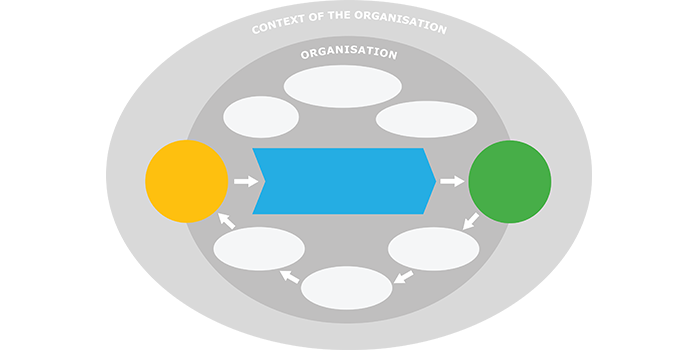Last year, about this time, I had the privilege to be one of the first 10 to be certified by RISE, Research Institutes of Sweden, as Innovation Leader. The certification is based on the standardisation work currently being done by the European Committee for Standardization (CEN), and driven by the Swedish Association of Innovation Leaders, together with RI.SE (Research Institutes of Sweden). If you are aspiring to become a certified Innovation Leader, you can find the application at RI.SE here >>
Immediately you may ask yourself, can you really standardise innovation? The thing is, it is actually not the innovation as such that is standardised, but rather the knowledge and experience about the ‘innovation system’.
By defining the challenges and aspirations you have with innovation as a system, you can start to track the interdependencies and drivers, and learn where to start with your organisation. You can create an awareness of the complexity, understand that you need start somewhere, take steps, observe change, and learn. You can compare it to an athlete, let it be an archer or golfer, continuously improving. If you change all parameters at once, how you stand, how you hold and grip, where you put the force or relax, you will have difficulties understanding what influence what. The standardisation help you understand the interdependencies, and it is about continuous learning and improvement.
Enabling innovation, and establishing a well-functioning system to capture new opportunities, need a system thinking. System thinking create awareness of the complexity, and how you go at it. It is very much dictated by your ambitions and intent.
Since some years now, just as Project Management (1950s), and Total Quality Management (1980s) started, the same thing is happening to innovation. It is becoming a management discipline. Internationally the last 10 years, the role of the Innovation Leader has started to emerge. This role is responsible in an organisation to identify and establish the drivers, and set the examples, for an innovation system to emerge.
Since 2003 people have started to organise and agreeing on a standardised framework for managing innovation. It is about helping and guiding organisations in what is best for them, their context and aspiration. Understanding the components, and the interdependencies is valuable for anyone working with innovation.
The Innovation Management Standard SIS-CEN/TS16555 is about creating a standardised framework for promoting innovation and developing capabilities for it. The standard started out as a draft from the countries from Scandinavia and is now an international collaboration of multiple organisations. The goal is to create a standardised model with ISO-certification within Innovation Management.

The purpose and background of the project is that the European Union considers innovation to be a key issue for European companies. The goal of the standard is to ensure a continuous flow of innovation that is needed to support the companies in achieving a high level of competitiveness and sustainable long-term success.
As of now, the first part of the standard “Innovation Management System” (IMS) has been finalised and approved by CEN. The complete CEN/TS 16555 will have the title Innovation Management and consist of the following seven parts:
- Innovation management system
- Strategic intelligence management
- Innovation thinking
- Intellectual property management
- Collaboration management
- Creativity management
- Innovation management assessment
The first part, Innovation Management Standard SIS-CEN/TS 16555-1 includes eleven sections, eight of them presenting topics of the IMS. The first three present general information about the management systems. The other eight sections provide a detailed explanation of guidelines and introduction to different aspects of the IMS.
- Section 1 – Scope
- Section 2 – Normative References
- Section 3 – Terms and Definitions
- Innovation
- Innovation management system
- Section 4 – Context of organisation
- Understanding the organisation and its context
- Understanding the need and expectations of interested parties
- Section 5 – Leadership for Innovation
- Vision and Strategy
- Leadership
- Culture
- Organisation
- Section 6 – Planning for Innovation Success
- Risk and opportunities
- Operational planning
- Section 7 – Innovation Enablers and Driving Factors
- Organisation of the roles and responsibilities
- Resources
- Competence
- Awareness
- Communication
- Documented information
- Strategic human resources
- Intellectual property and knowledge management
- Collaboration
- Section 8 – Innovation Management Process
- Innovation Process
- Assessing the result of the innovation process
- Innovation management process elements
- Section 9 – Performance Assessment of the Innovation Management System
- Section 10 – Improvement of the Innovation Management System
- Section 11 – Innovation Management Techniques
- Strategic intelligence management
- Innovation thinking
- Intellectual property management
- Collaboration management
- Creativity management

Don’t hesitate to reach out if you would like to know more, or think we can service you.
Take care!
Christian

